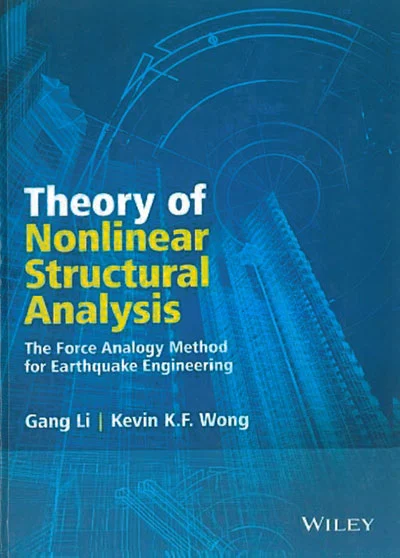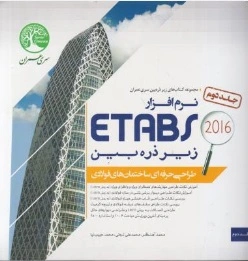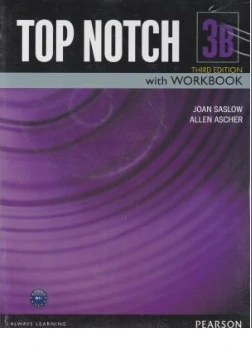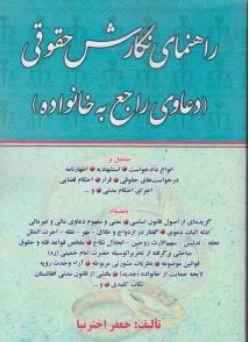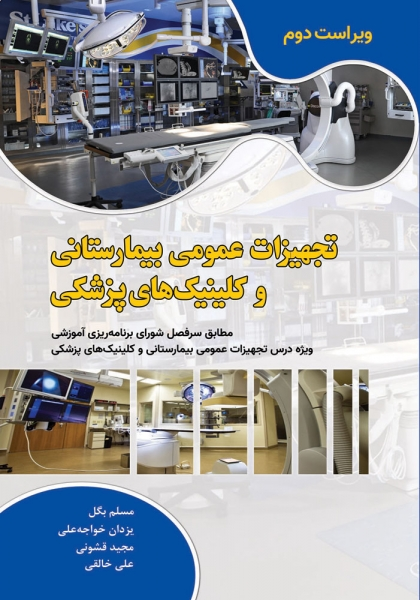Preface
Although the seismic design for buildings is currently based on elastic analysis, nonlinear structural
analysis has become increasingly important in the investigation of structural response to
environmental loads, especially during earthquakes. Nonlinear structural analysis in civil engineering
is not a new topic, but the existing method used for calculating the nonlinear behavior
of civil engineering structures is often by changing the structural member stiffness. With
respect to the dynamic analysis algorithms, the typical method is the time integral of variable
stiffness matrices, such as the Wilson-θ and Newmark-β methods. For these conventional
methods, the primary problem is that significant iterative computations have to be carried
out to ensure numerical convergence once the structure experiences yielding and nonlinear
deformation. As a result, the iterative operation is time consuming and the entire dynamic analysis
process becomes practically uneconomical. The Force Analogy Method as a relatively new
algorithm was first developed in 1999 for solving nonlinear dynamic analysis problems, in
which the state transition matrix needs to be computed only once due to the consistent use
of initial stiffness, and this greatly simplifies the overall computation and makes the nonlinear
analysis readily available for solving various practical problems.
This book focused on the Force Analogy Method, a novel method for nonlinear dynamic
analysis and simulation. A review of the current nonlinear analysis method for earthquake engineering
is summarized and its importance explained. Additionally, how the force analogy
method can be used in nonlinear static analysis will be discussed through several nonlinear
static examples. The emphasis of this book is to extend and develop the force analogy method
to performing dynamic analysis on structures under earthquake excitations, where the force
analogy method is incorporated in the flexural element, axial element, shearing element and
so on will be exhibited. Moreover, the geometric nonlinearity into nonlinear dynamic analysis
algorithm based on the force analogy method is included in this book. The application of the
force analogy method in seismic design for buildings and structural control area will be discussed
combined with practical engineering. This book will be a milestone of nonlinear
dynamic analysis and may bring about significant advancement in earthquake engineering.
The authors would like to express their appreciation to Professor Hong-Nan Li at the Dalian
University of Technology (DUT), for his advice and support, Professor Larry A. Fahnestock at
University of Illinois at Urbana & Champaign, Mr. Yu Zhang, a Ph. D candidate at DUT, and
Mr. Feng Zhang, a graduate student at DUT, for their collaborative works, and Mr. Ying Li, for
his early contributions. In addition, many thanks go to Zhi-Qian Dong, Yong-Qiang Jin,
Jia-Long Li and Li-Hua Zhu, present students at DUT, for their work on the figures.
Gang Li
Contents
Preface ix
About the Authors xi
1 Introduction 1
1.1 History of the Force Analogy Method 1
1.2 Applications of the Force Analogy Method 4
1.2.1 Structural Vibration Control 4
1.2.2 Modal Dynamic Analysis Method 6
1.2.3 Other Design and Analysis Areas 6
1.3 Background of the Force Analogy Method 6
References 14
2 Nonlinear Static Analysis 17
2.1 Plastic Rotation 17
2.2 Force Analogy Method for Static Single-Degree-of-Freedom Systems 19
2.2.1 Inelastic Displacement 19
2.2.2 Application of the FAM on SDOF System 20
2.2.3 Nonlinear Analysis Using FAM 22
2.3 Nonlinear Structural Analysis of Moment-Resisting Frames 26
2.4 Force Analogy Method for Static Multi-Degree-of-Freedom Systems 31
2.5 Nonlinear Static Examples 36
2.6 Static Condensation 52
References 61
3 Nonlinear Dynamic Analysis 63
3.1 State Space Method for Linear Dynamic Analysis 63
3.1.1 Equation of Motion 64
3.1.2 State Space Solution 66
3.1.3 Solution Procedure 68
3.2 Dynamic Analysis with Material Nonlinearity 72
3.2.1 Force Analogy Method 72
3.2.2 State Space Analysis with the Force Analogy Method 74
3.2.3 Solution Procedure 76
3.3 Nonlinear Dynamic Analysis with Static Condensation 87
3.4 Nonlinear Dynamic Examples 99
References 109
4 Flexural Member 111
4.1 Bending and Shear Behaviors 111
4.1.1 Hysteretic Models 111
4.1.2 Displacement Decomposition 113
4.1.3 Local Plastic Mechanisms 115
4.2 Inelastic Mechanisms of Flexural Members 115
4.2.1 Elastic Displacement x0 116
4.2.2 Plastic Bending Displacement x001 117
4.2.3 Plastic Shear Displacement x002 117
4.2.4 Combination of the Bending and Shear Behaviors 117
4.3 Nonlinear Static Analysis of Structures with Flexural Members 118
4.3.1 Force Analogy Method for Static Single-Degree-of-Freedom Systems 118
4.3.2 Force Analogy Method for Static Multi-Degree-of-Freedom Systems 129
4.4 Nonlinear Dynamic Analysis of Structures with Flexural Members 143
4.4.1 Hysteretic Behaviors of the Flexural Members 143
4.4.2 Solution Procedure of the FAM 146
References 159
5 Axial Deformation Member 161
5.1 Physical Theory Models for Axial Members 161
5.1.1 General Parameters 162
5.1.2 Displacement Decomposition 163
5.2 Sliding Hinge Mechanisms 164
5.3 Force Analogy Method for Static Axial Members 166
5.3.1 Regions O–Aa and O–F 166
5.3.2 Region F–G 166
5.3.3 Regions Aa–A and A–B 167
5.4 Force Analogy Method for Cycling Response Analysis of Axial Members 170
5.4.1 Region B–C 170
5.4.2 Region C–D 171
5.4.3 Region D0–A2 172
5.4.4 Region D–E 173
5.4.5 Region E–F 174
5.4.6 Region Aa2–A2 174
5.5 Application of the Force Analogy Method in Concentrically Braced Frames 178
5.5.1 Force Analogy Method for Static SDOF CBFs 178
5.5.2 Force Analogy Method for Static MDOF CBFs 182
5.5.3 Force Analogy Method for Dynamical CBFs under
Earthquake Loads 188
References 194
6 Shear Member 195
6.1 Physical Theory Models of Shear Members 195
6.1.1 Flexural Behavior 195
6.1.2 Axial Behavior 197
6.1.3 Shear Behavior 197
6.2 Local Plastic Mechanisms in the FAM 198
6.2.1 Displacement Decomposition 198
6.2.2 Behavior of VSH 199
6.2.3 Behavior of HSH 200
6.3 Nonlinear Static Analysis of the Shear Wall Structures 201
6.4 Nonlinear Dynamic Analysis of RC Frame-Shear Wall Structures 222
6.4.1 Hysteretic Behaviors of the RC Shear Wall Members 222
6.4.2 Solution Procedure of the FAM 224
References 234
7 Geometric Nonlinearity 235
7.1 Classical Stiffness Matrices with Geometric Nonlinearity 236
7.1.1 The P-Δ Approach 237
7.1.2 The Geometric Stiffness Approach 238
7.2 Stability Functions 239
7.2.1 Stiffness Matrix [Ki] 240
7.2.2 Stiffness Matrix [K0i] 244
7.2.3 Stiffness Matrix [K00i ] 246
7.3 Force Analogy Method with Stability Functions 250
7.4 Nonlinear Dynamic Analysis Using Stability Functions 261
7.4.1 Force Analogy Method 261
7.4.2 Nonlinear Dynamic Analysis with the Force Analogy Method 262
7.4.3 State Space Analysis with Geometric and Material Nonlinearities 263
7.5 Nonlinear Dynamic Analysis with Static Condensation Using
Stability Functions 272
7.6 Nonlinear Dynamic Examples 283
References 294
8 Application of the Force Analogy Method in Modal Superposition 297
8.1 Nonlinear Static Pushover Analysis in the FAM 298
8.1.1 NSPA for Mass-Normalized SDOF Systems 299
8.1.2 NSPA for Multi-Degree-of-Freedom Systems 303
8.2 Modal Decomposition in the FAM 312
8.3 Modal Response Summation 318
8.4 Nonlinear Modal Superposition Method Example 319
References 329
9 Application: Structural Vibration Control 331
9.1 Passive Control Technique 331
9.1.1 Model of Passive Energy-Dissipation Devices 331
9.1.2 Model of Framed Structures with PEDDs 333
9.1.3 Force Analogy Method for Dynamical Analysis of
Multi-Degree-Freedom Systems 334
9.2 Application of the FAM in Active or Semi-Active Structural Control 336
9.2.1 Background of MBC 336
9.2.2 Force Analogy Method in Market-Based Control 342
References 349
Index 351


